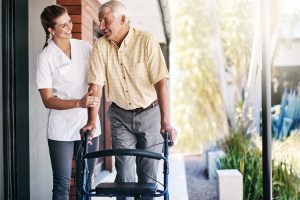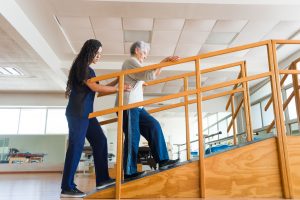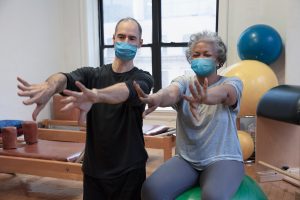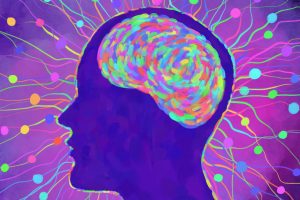
Treating Parkinson's Disease with LSVT
Treatment GuidelinesThe Lee Silverman Voice Technique focuses on big amplitude of movement to compensate for the hypokinesia associated with PD. All exercises are performed with the largest possible motion. This high-intensity exercise helps improve neuroplasticity of movement.
LSVT is an evidence-based treatment for Parkinson’s disease (PD). PD is one of the most complicated diagnoses that rehabilitation professionals treat due to its wide variety of clinical presentations and lack of standardized care.
The typical approach is to treat each impairment individually, but this can be a slow process with seemingly endless visits. This approach can make documentation for reimbursement difficult, since it requires treatment of multiple body parts and systems on a long-term basis.
In this article, we will discuss an evidence-based practice called Lee Silverman Voice Treatment (LSVT) BIG Therapy for Parkinson’s disease. We will review the motor signs of PD and take an in-depth look at how LSVT BIG could boost your patient outcomes and replace your typical treatment techniques for PD.
How Parkinson’s Affects the Motor System
As a review, there are four cardinal signs of Parkinson’s disease that affect the motor system:
- Postural instability: impaired balance and decreased reactive ability to prevent falls
- Bradykinesia: slowness of movement (this is the primary focus of LSVT BIG)
- Rigidity: muscular stiffness
- Resting tremor: tremor while body part is at rest
Intro to LSVT BIG for Parkinson’s
The LSVT BIG program involves an intensive delivery of treatment for four consecutive days per week for four consecutive weeks. Additionally, patients are to complete daily homework and functional exercises. The patient and clinician choose the functional exercises together to make sure they are safe, challenging, beneficial, and meaningful. Patients should continue their daily home exercises after the program has ended.
The treatment focuses on big amplitude of movement to compensate for the hypokinesia associated with PD. That means all exercises are performed with the largest possible motion, hence the name “BIG.” The high-intensity exercise helps improve neuroplasticity of movement.
Because individuals with PD develop bradykinesia and hypokinesia gradually, they often don’t notice the low amplitude of their everyday movements. Over the course of treatment, individuals develop larger movements through a process called sensory calibration. That development is carried over into gait and other functional tasks.
Typical LSVT BIG Sessions
Each in-person treatment includes a series of movements called “Maximal Daily Exercises.” These are short movements that translate into common functional motions. During these exercises, the client should focus on making the movements as large as possible. The clinician will mirror the patient and provide regular cueing. Sessions also include gait and any functional tasks the patient is struggling with.
Based on the therapist’s clinical judgment, these exercises can be modified for safety and skill level. For example, if a client can’t tolerate standing exercises, they can do all the exercises from a wheelchair or regular chair. For an added challenge, clients can do these exercises while standing on a foam mat.
Evidence-based Outcomes for LSVT
Research on LSVT BIG shows improvements in the following areas:
- Faster walking with bigger steps1
- Improved dual-tasking ability2
- Increased balance3
- Improved Unified Parkinson’s Disease Rating Scale (UPDRS) score4
In addition to the outcomes-based improvements, LSVT BIG offers a significant shift in the way patients handle and consider their Parkinson’s diagnosis. Graduates of the program should return for a follow up reassessment every few months with the option for a “tune up” session. This shifts the thinking about treatment from a “fix” to a sustainable management program for Parkinson’s disease. The program also allows patients to take an active role in their own treatment by performing a home program and deciding what functional exercises are meaningful to them.
LSVT Certification
Only licensed clinicians who are certified in LSVT BIG can perform this treatment. Certification is available to most rehabilitation professionals including PTs, PTAs, OTs, and OTAs. LSVT Global provides certification courses and requires renewal every two years. Clinicians who are not certified may not describe their services as LSVT BIG in any clinic marketing. But, they can certainly incorporate the concepts of high amplitude and high intensity treatment in their practice. Earning an LSVT certification is an opportunity to earn continuing education hours, better serve your patient community, and offer a new service at your clinic.
LSVT as Preventive Care
LSVT BIG Therapy offers an effective and well-rounded approach to treating Parkinson’s disease. Rather than reducing treatment to “maintenance therapy,” LSVT BIG consistently shows improvements in several different outcomes. It takes a more preventive approach, rather than treating Parkinson’s disease after an injury or a serious fall has occurred. LSVT Global encourages physicians and therapy clinicians to begin treatment early to reduce disease progression and severity.
Combining high-amplitude movements in an intensive program, LSVT BIG is becoming the gold standard of evidence-based practice for Parkinson’s disease.
Danielle Salgo, DPT
References
- Farley BG, Koshland GF. 2005. Training BIG to move faster: the application of the speed-amplitude relation as a rehabilitation strategy for people with Parkinson’s disease. Experimental Brain Research. https://pubmed.ncbi.nlm.nih.gov/16283401/
- Isaacson, S., O’Brien, A., Lazaro, J. D., Ray, A., & Fluet, G. 2018. The JFK BIG study: the impact of LSVT BIG® on dual task walking and mobility in persons with Parkinson’s disease. Journal of Physical Therapy Science. https://www.ncbi.nlm.nih.gov/pmc/articles/PMC5909018/
- Ebersbach G, Ebersbach A, Gandor F, Wegner B, Wissel J, Kupsch A. 2014. Impact of physical exercise on reaction time in patients with Parkinson’s disease-data from the Berlin BIG Study. Archives of Physical Medicine and Rehabilitation. https://pubmed.ncbi.nlm.nih.gov/24231400/
- Ebersbach G, Ebersbach A, Edler D, Kaufhold O, Kusch M, Kupsch A, Wissel J. 2010. Comparing exercise in Parkinson’s disease–the Berlin LSVT®BIG study. Movement Disorders. https://pubmed.ncbi.nlm.nih.gov/20669294/





